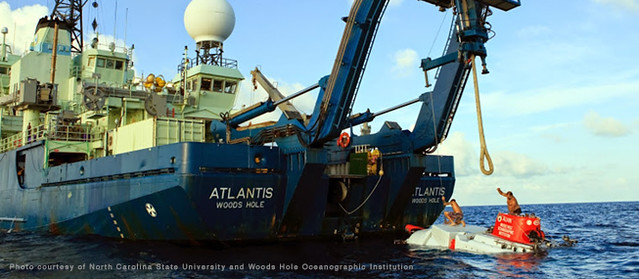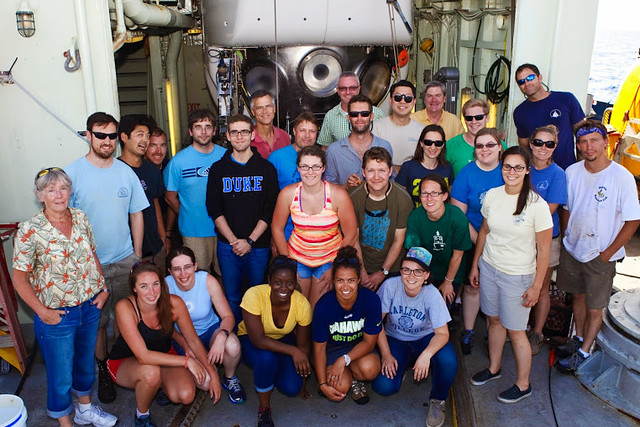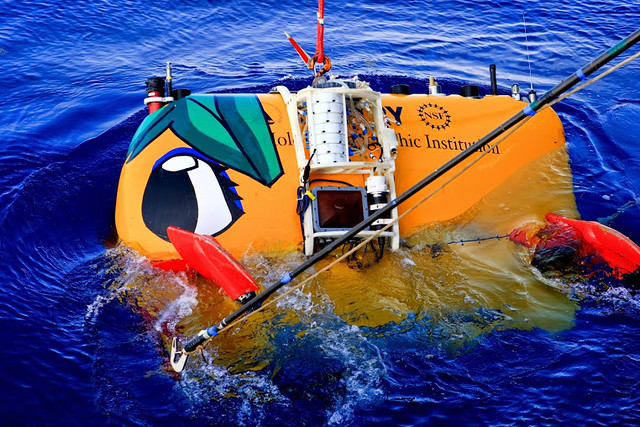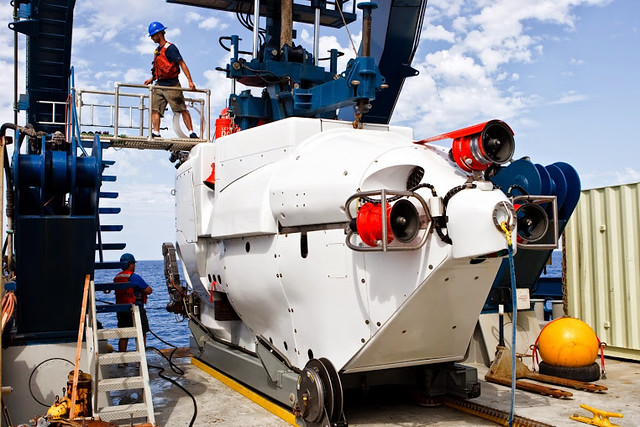 With funding from the National Science Foundation (NSF) a group of researchers from Duke University, North Carolina State University and University of Oregon just completed an intensive deep-sea survey in the Gulf of Mexico.
 Photo courtesy of North Carolina State University and Woods Hole Oceanographic Institution
|
|
The major objective of this research cruise was to advance understanding of connectivity in the deep sea. This was done with sophisticated ocean observing technology and platforms including the state-of-the-art deep sea submersible Alvin.
Using taxa found at cold seeps the researchers will quantify variability in oceanographic circulation, life histories and biological genetics. Mooring recoveries and deployments, Alvin seep sampling, MOCNESS plankton sampling, AUV Sentry high-resolution mapping, CTD casts, XBT’s and Hydrophone were all conducted.
 Photo courtesy of North Carolina State University and Woods Hole Oceanographic Institution
SECOORA PI Ruoying He (also a co-PI of this NSF project) was a member of the survey science team, making his first Alvin dive to 2500 m (8202 feet). Some of the photos taken during the cruise and his Alvin dive can be viewed here.
|
|
"My exploration on board Alvin was a very exciting experience. The entire divewasapproximately 8 hours. It took Alvin about 3 hours round-trip traveling between the ocean surface and bottom, and during the rest of time, we wereat the sea floor observing and taking samples. While I knew there is a deep sea marine ecosystem from reading text books and scientific papers, I was still completely blown away when I saw a myriad of marine lives in the pitch dark, freezing cold environment at the bottom of the gulf nearly two miles below the surface. This reminds me how essential observations are for understanding our ocean.” Ruoying said to SECOORA staff.
|
 Photo courtesy of North Carolina State University and Woods Hole Oceanographic Institution
|
Related news

News
April 2, 2024
President Biden Proposes Significant Budget Cuts to IOOS for 2025
President Biden’s recent 2025 budget proposal slashed the funding allocated for the Integrated Ocean Observing System (IOOS) by 76%, which would effectively shut down coastal and ocean observing efforts.

News
March 14, 2024
Webinar: NOAA Resources to Help Coastal Communities Understand Flood Risk
Join us Wednesday, March 27th at 12 PM Eastern Time for SECOORA's Coastal Observing in Your Community Webinar Series to hear from Doug Marcy with the NOAA Office for Coastal Management.

News
March 11, 2024
Hiring: SCDRP Program Coordinator
The Southeast & Caribbean Disaster Resilience Partnership (SCDRP) is seeking a part-time Program Coordinator. Applications are due by April 1st, 2024.